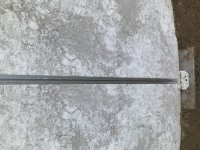Hey all!
Just got my wilbar optimum AGP installed today. I’m trying to figure out strategy for bonding the pool. I’ve seen other folks who have attached bonding lugs to the upright supports around the pool. With my pool, I’m not really sure how I would attach one of those things (pic attached). Any advice would be much appreciated!
Thanks,
Steve

Just got my wilbar optimum AGP installed today. I’m trying to figure out strategy for bonding the pool. I’ve seen other folks who have attached bonding lugs to the upright supports around the pool. With my pool, I’m not really sure how I would attach one of those things (pic attached). Any advice would be much appreciated!
Thanks,
Steve



